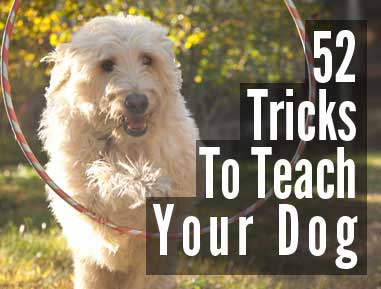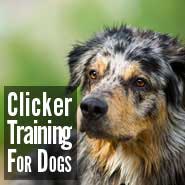
We came across an old National Geographic Magazine from 1917 - an issue that was solely dedicated to dogs. This magazine was so interesting, we thought that we would share some of it with you. The writers are Ernest Harold Baynes, and Louis Agassiz Fuertes.
All of the illustrations were done by Louis Agassiz Fuertes. I know that the breeds listed aren't all of the breeds - there are some noteworthy dog breeds that deserve attention - but we're listing only the ones that were in this issue of National Geographic. Also, DoggieBuddy.com might not hold all the views that these writers hold.
We hope that you appreciate this exceptional work just as much as we did. Enjoy!
 |
Wolves And CoyotesThe timber, or gray, wolf, which undoubtedly has an influence in the formation of the native Indian and Eskimo dogs of this country, formerly occupied practically all of the northern continent of America. |
 |
The DingoThe dingo is the most doglike of any of the wild members of the canine group, and the fact that they interbreed freely and produce regularly fertile progeny is further evidence of its proximity to the dogs of mankind. |
 |
Norwegian ElkhoundThe Norwegian Elkhound is used to some extent as a carrying and draft animal, but is unsurpassed in the rough and tumble of the hunt for such big game as bear, wolves and elk |
 |
The Persian Gazellehound, or SlughiThis ancient race is one of the most peculiar, most beautiful, and most puzzling of dogs. His graven image comes to us as one of the earliest of man's essays in art, and is so easily recognizable that there is no doubt possible as to the archaic artist's model. |
 |
Otter HoundThere are only an estimated 1,000 or so Otterhounds in the world and somewhere between 350 and 400 in the US. Even in the early 20th century, when otter hunting was most popular as a sport, Otterhounds were not numerous. |
 |
GreyhoundDeveloped originally for great speed in the pursuit of antelope, gazelles, and desert hares, the greyhound, though one of the most ancient, is also one of the most extreme types of dog known to man. |
 |
WhippetA small and very swift breed of greyhound called the whippet has been developed in England, and whippet racing is an old and favorite sport among English workingmen, particularly in the northern and northwestern countries. |
 |
Scottish DeerhoundIn olden times the possession of a fine deerhound was a matter of sufficient consequence for tribes to go to war about. In a battle between the Picts and Scots over one of these dogs more than 160 men were killed |
 |
Irish WolfhoundThere are some who think the Irish wolfhound an even better dog than the Scottish deerhound. If he is, it must be because there is more of him; for, barring the fact that he is of rather more massive build, he is practically a gigantic deerhound. |
 |
Russian WolfhoundIn Russia these hounds are used in wolf hunting. The wolves are first driven out of the woods by smaller dogs or by beaters, and when a wolf comes into the open two or three borzois, well matched as to speed and courage, are unleashed and sent after him. |
 |
Great DaneNot quite so swift as the greyhound, deerhound, or wolfhound, the Great Dane is more powerful than any of them and fast enough to overtake most things that run. At his best he is a huge dog, built on greyhound lines, but much more massive. |
 |
BloodhoundBloodhounds have been used by police departments, being brought to the scene of a crime within a few hours after it has been committed, rendering valuable assistance by leading the police directly to the man they are seeking. |
 |
FoxhoundThe fine qualities developed by hard riding, by facing all kinds of weather, and by the dangers incident to jumping high fences and wide ditches, coupled with the sportsmanly behavior which constitutes the etiquette of the hunting field, were just the traits required to make gallant soldiers and successful colonists. |
 |
The Beagle and BassetThe beagle and basset are smaller hounds used chiefly for hunting hares and rabbits, and are usually followed on foot. There are smooth-coated and rough-coated varieties of both breeds. |
 |
English PointerPointers were bred to work with hunters. In the past they were sometimes used in combination with a retriever, to point out the game for the hunter. |
 |
DalmationThe Dalmatian was originally a “pointer” and in his native country was used for sporting purposes. But in England he was found to be very inferior to the native pointer, and, as he showed a marked fondness for horses and stables, he was specially trained as a “coach” or “carriage” dog. |
 |
SettersIn this country no dog is so well fitted for hunting grouse, pheasants, quail, and feathered upland and woodland game in general as well as the setter. |
 |
RetrieversMany breeds of dogs have been trained to find and bring in game which has been shot, but retrievers, as their name implies, are bred specially for that purpose. |
 |
Irish Water SpanielIdentified more or less with the retrievers, because they perform similar duties, are the sporting spaniels, which, because they are divided into so many branches, constitute perhaps the largest dog family in the world. |
 |
Clumber, Field and Cocker SpanielsThese rather closely related dogs may, like the setters, be considered each in relation to the others. The Clumber is the largest, the Cocker the smallest and the Field lies in the middle. They are bred for hunting, but make excellent house pets. |
 |
NewfoundlandTwo dogs which rival the Eskimo in their ability to endure deep snow and extreme cold are the St. Bernard and the Newfoundland, both of which have become famous as savers of life. |
 |
SpitzThe “wolf spitz” of the mid-Victorian fancier is now seldom seen in this country; yet he is a very interesting dog, having much to do in the gradual evolution of many types popular today. |
 |
Alaskin Eskimo DogThere are a good many names for the Eskimo dogs and a good many types, as their range covers a stretch of country some 4,000 miles long and 1,500 miles wide. |
 |
North Greenland Eskimo DogIn appearance he is between a white spitz dog and a white Eskimo; in character he is one of the very nicest of dogs. He is of medium size, weighing about 40 pounds. |
 |
ChowThe Chow is a common dog in China, but in this country he is regarded as an aristocrat, which is not unreasonable considering his proud bearing and ancient lineage.In appearance he is between a white spitz dog and a white Eskimo; in character he is one of the very nicest of dogs. He is of medium size, weighing about 40 pounds. |
 |
St. BernardsThe St. Bernard won both his name and his fame in the Swiss Alps, where for many years the monks of the Hospice St. Bernard have used dogs to assist them in saving the lives of travelers lost in the snow. |
 |
CollieThere is little resemblance between the working “collie” of the Scottish sheep-herder and the elaborately furred, slender faced, beuchdog now so popular. |
 |
English Sheep-DogRapidly gaining in popularity, the curious woolly sheep-dog has become thoroughly established in the United States; he has long been used as a practical helper in the great sheep-ranges of western Canada. He bears to resemblance whatever to the familiar collie type of sheep-dog, but looks rather like a great long-legged, round-headed, bounding terrier. |
 |
Shepherds, German and BelgianOn the continent of Europe there are many kinds of dogs used for guarding sheep, but those best known in this country are the German and Belgian sheep-dogs. They have come into unusual prominence within the last five years because of the notable part they have played with the Red Cross units and in other activities on the battlefields of France and Belgium. |
 |
The Pyrenean Sheep-DogOne of the most beautiful dogs in the world is the Pyrcncan sheep-dog, but, alas! the breed is almost extinct. Technically speaking, this animated snowdrift is not a sheep-dog at all. but closely related to the mastiffs. |
 |
The MastiffIf the Pyrencan dog is one of the most beautiful dogs in the world, surely the English mastiff is one of the most famous. It is regarded as probably the oldest of all British dogs, and, as we have seen, its ancestors were used by the Assyrians for hunting big game. |
 |
BulldogThe English bulldog for hundreds of years and in almost every land has typified unflinching courage and unshakable determination. As the lion has been used to represent the majesty of Great Britain, so the bulldog has been used to represent her persistence. |
 |
French BulldogThe French bulldog, we are told, was originally a Spanish bulldog, a much larger animal, formerly used in Spain for baiting bulls. |
 |
The TerriersThe terriers, as their name suggests, go to the earth (la tcrre) for their prey—dogs primarily intended to unearth foxes, badgers, rabbits, rats, and other comparatively small animals which seek refuge in burrows in the ground. |
 |
Manchester, or Black and Tan TerrierThis active, speedy little dog has had much influence in the formation of many of the present-day breeds. |
 |
Doberman PinscherPerhaps the finest terrier with black-and-tan coloring is the Dobermann Pinscher, a sort of glorified Manchester terrier, which has been developed in Germany within the last 60 years. |
 |
Boston TerrierThe Boston terrier is an American-made animal, whose bull and terrier ancestors came from England between 40 and 50 year's ago. Many of them settled in Boston, where they became so refined that in a few generations much of the bulldog was bred out of them. |
 |
Fox TerrierAmong the best known of all dogs is that buoyant, irrepressible, and violently affectionate creature known as a fox terrier. Somehow he is always associated in many minds with sunshine and dancing, and when properly cared for and kindly treated he is a joyous thing. |
 |
The Irish TerrierThe Irish terrier has well earned his nickname "dare-devil," for he has few if any equals for sheer reckless courage. He is an interesting, loyal pal, and until he "hears the call of duty," he has a quiet, unobtrusive manner, which is very deceptive; but he will stand for no nonsense, and once trouble has been started, he'll stay till it's over. |
 |
The Welsh TerrierThe Welsh terrier may best and most briefly be described as a wire-haired fox terrier colored in general like an Airedale. This does not of course cover the liner points, but gives a general impression of his looks. |
 |
Airedale TerrierBy far the most popular big terrier, in this country at least, is the Airedale, and for an all-around dog he would be very hard to beat. He is afraid of nothing that walks or crawls on land, and his great fondness for the water betrays the otterhound blood which is in him. |
 |
Bedlington TerrierThe Bedlington terrier is a dog of very deceptive appearance, and this may account in some degree for the fact that he has never been very popular. |
 |
Scottish TerrierWith a stout heart, is the Scottish terrier, or "Scottie," as he is familiarly called—a shortlegged, stocky-bodied, wire-coated "tyke," who looks like nothing else in the world. |
 |
The West Highland White TerrierThe West Highland white is almost the counterpart of the Scottish terrier except in color, which must be pure white, with black nose. |
 |
The Skye TerrierNo doubt in his earlier days the Skye terrier was a good sport, but of late years he has given so much consideration to "dress" that he has degenerated into a lap-dog. |
 |
The Yorkshire TerrierThe Yorkshire terrier, as a rule, is frankly exhibited as a toy. This breed, too, claims to have had sporting instincts, but today he is an artificial creature, and, so far from being useful, practically requires a valet to keep his beautiful long, silken coat in order. |
 |
The Maltese TerrierThe Maltese terrier, which should be pure white, is said to be of very ancient lineage and to have been a favorite of the ladies of olden Rome, lie is covered with long, straight, silky hair from head to toes, and he has dark, snappy eyes, which in some individuals give an appearance of great alertness and intelligence. |
 |
The PomeranianToy dogs have been developed from larger breeds by selective breeding. They all serve one main purpose, and it is a good one—they bring joy and companionship to the thousands of people who own them. |
 |
The PekingeseThe Pekingese are the sacred temple dogs of Peking, and were once so carefully guarded that their theft was punishable by death. This Oriental toy is of great antiquity, as is proved in the art and sculpture of ancient dynasties in China. |
 |
Japanese SpanielThere are many kinds of lay spaniels, and in imperfect specimens it is sometimes difficult to know just where to place them. To add to the ease of confusion, fashion or caprice sometimes dictates new names for old friends, and the maze of synonyms is hard for the uninitiated to follow. |
 |
The King Charles SpanielThey are all small, scaling from seven to twelve pounds. The ears are very long and flowing, reaching nearly to the ground, and are heavily furred with long, silky hair. |
 |
The Brussels GriffonThe origin of the Brussels griffon is in doubt. Some authorities say that he really came from Brussels; others say that he originated in the coal mines of England. In any case, he is one of the funniest-looking dogs in the world. |
 |
The DachshundThe dachshund, or badger dog, combines to a high degree the qualities of the hound and the terrier, and probably both of these were used in his development, but where he got his crumpled legs is less apparent. |
 |
The SchipperkeThe schipperke got his name from being so frequently seen on the canal barges of Belgium, where he makes a good "watch" and keeps down the rats. The word is pronounced "skippcrkce" and is the Flemish for "little skipper." |
 |
PoodlesThe poodle is admitted to be among the most intelligent of dogs, and why he should have been specially selected for the clown is hard to understand; but the fact remains that for hundreds of years it has been the custom to treat his coat in such a way as to make him ridiculous. |
 |
Mexican HairlessEvery kind of a dog. however bizarre or degenerate, can find a human friend somewhere, and this most unprepossessing product ofour unfortunate neighbor to the south is noexception. |
 |
ChihuahuaThe Chihuahua dog is simply a diminutive, spindly, prominent-eyed and apple-headed little terrier-like dog—all dog and simply dog. He is an affectionate and benign little creature, as most large-headed dogs are, and his physical characteristics are shown in the plate. |
 |
The PugThe pug was once a great favorite with those who like pet dogs, but he has long since been supplanted' by other and more attractive breeds. |




